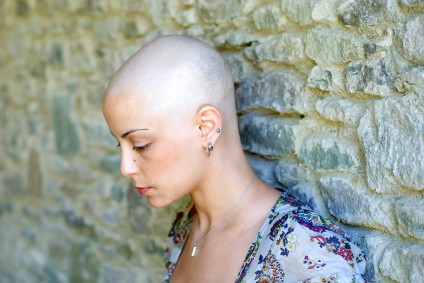Cancer affects everyone. Maybe you have had a personal experience, or perhaps you know a family member, friend or colleague who has faced cancer head-on, or you’ve had a positive screening test or biopsy result that kept you up at night.
In spite of media headlines lamenting that we don’t yet have a cure for cancer, as we were promised several times in the past would have been achieved by now, it’s sobering to read about the early days and realize how far scientific advances have progressed to find new treatment alternatives.
My optimism springs from reading The Death of Cancer by Vincent DeVita Jr., M.D., and Elizabeth DeVita-Raeburn, a medical and science writer, and DeVita’s daughter. It’s an insightful read through DeVita’s fifty-year career on the front lines of the war on cancer. Dr. DeVita is a professor of medicine, epidemiology and public health at the Yale School of Medicine, and former director of the National Cancer Institute (NCI) and the National Cancer Program in the United States. At the NCI, he developed a combination chemotherapy cure for Hodgkin’s lymphoma, proving that drug treatments can cure advanced cancers. And yes, in this case, cured is exactly the right word.
Three essential paradigm shifts in cancer treatment
Over the last 50 years, three paradigm shifts have significantly advanced cancer treatment:
- Combination chemotherapy can cure advanced cancer. DeVita’s discovery led to a significant decline in mortality from leukemias and lymphomas. Combination chemotherapy together with surgery and/or radiotherapy has since effectively reduced mortality rates for common cancers like breast and colon cancer.
- Cancer is a genetic disease, driven by genetic mutations at the cellular level. This recognition led to the development of tyrosine kinase inhibitors such as imatinib (Gleevec), which can target the oncogene responsible for the unchecked growth of chronic myeloid leukemia (CML) cells. Today, CML is no longer a fatal disease; it’s considered a chronic condition that does not shorten life span. This targeted therapy approach is now being applied to other cancers with identified, specific genetic mutations, such as lung cancer and melanoma.
- Harnessing a patient’s immune system can work for a majority of patients. “Though recent, this finding has already had a major impact on patients with advanced melanoma, formerly a tumor highly resistant to treatment, and very advanced leukemias and lymphomas,” say the authors. Immunotherapy is indeed a hot area for research and development right now, driven by advances in understanding the biology of cancer.
Eight hallmarks of cancer
The authors mentioned Robert A. Weinberg and Douglas Hanahan’s “Hallmarks of Cancer: The Next Generation,” paper, published in the journal Cell, March 2011. Weinberg and Hanahan detailed eight distinct and complementary characteristics that cancer cells possess, adding two more to the six they wrote about in their earlier paper published in 2000:
- sustained proliferative signaling
- evasion of growth suppressor
- resistance to cell death
- avoidance of immune destruction
- the ability to induce angiogenesis
- deregulation of cellular energetics
- ability to enable replicative immortality
- the activation of invasion and metastases
If you are interested in reading more about these biological characteristics, you can read the full paper here: Hallmarks of Cancer: The Next Generation. (open access)
How to win the war against cancer
Understanding these biological mechanisms is paving the way for the development of new therapies. DeVita and DeVita-Raeburn assert that to win the war against cancer, “…we must attack multiple hallmarks of cancer at the same time, which requires that we do new, complex clinical trials of a new kind. We need new studies that are planned to address the hallmarks of the specific cancer cell in question, and can change the approach and monitor the effectiveness of changes on the fly. Studies as currently permitted under existing regulatory frameworks won’t do the job.”
Given that every cancer is different, I agree that clinical study methodology and regulatory oversight frameworks will need to change. Defeating cancer will require using each person’s specific disease as a blueprint that guides which arrows are drawn from the quiver and fired to bring it down. Single wins, one patient at a time, will cumulatively add up to overall victory. There will never be one cure that will work for all.
Like most people, I look forward to the day when we can celebrate the death of cancer in the future. If you have read The Death of Cancer, I would love to hear your thoughts.




I did read the book, and I found it to be well-written but, sadly, sobering. I also volunteer with an organization (www.global-cures.org) that is working to change the culture of cancer care, and it’s a daunting prospect. There are many possible treatments that are ready, now, for clinical trials, but they won’t make any money, so they aren’t being tested. DeVita really puts his finger on the political and economic factors that are causing unnecessary deaths to cancer.
Thanks for your comment, Lora. I agree it was sobering to read how much time and effort has been required so far to bust the silos that had grown around doctors’ specialty areas and try to get the focus back on collaboration for better patient outcomes — an uphill battle. I see in the New York Times op/ed that Dr. DeVita is not convinced Obama’s Moonshot announcement goes anywhere nearly far enough to overcome the regulatory oversight hurdles.
It’s both sad and wrong that current frameworks are not working effectively to translate research findings to patients faster. I heard a world-renown stem cell scientist speak last April about his invention, a unique way to boost and deliver stem cells to patients with aggressive cancers. He’s sorry he sold the invention to a pharma company because it sat in a drawer for more than 10 years, but he recently got it back. http://www.mercurynews.com/california/ci_28308095/stanford-stem-cell-product-delayed-more-than-decade